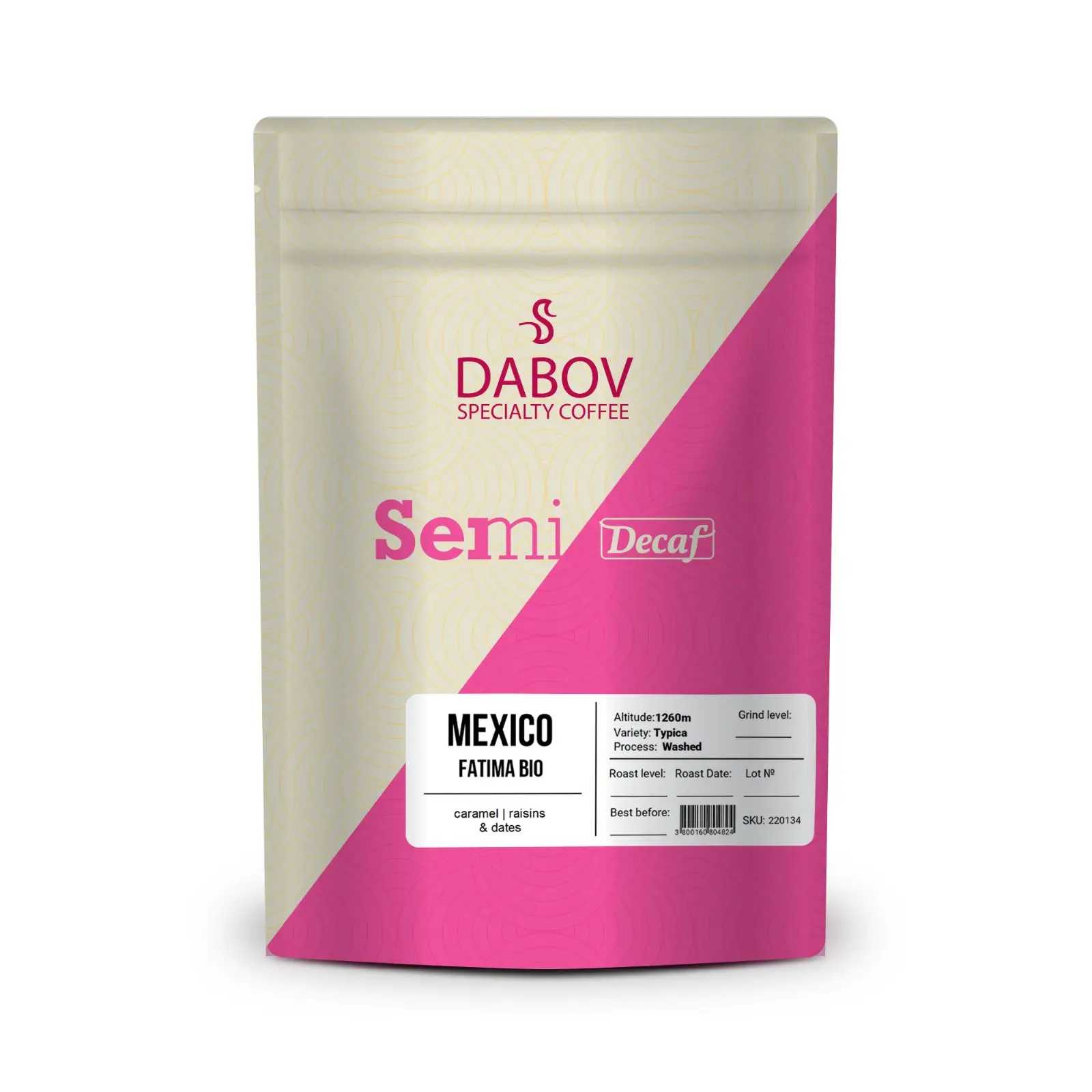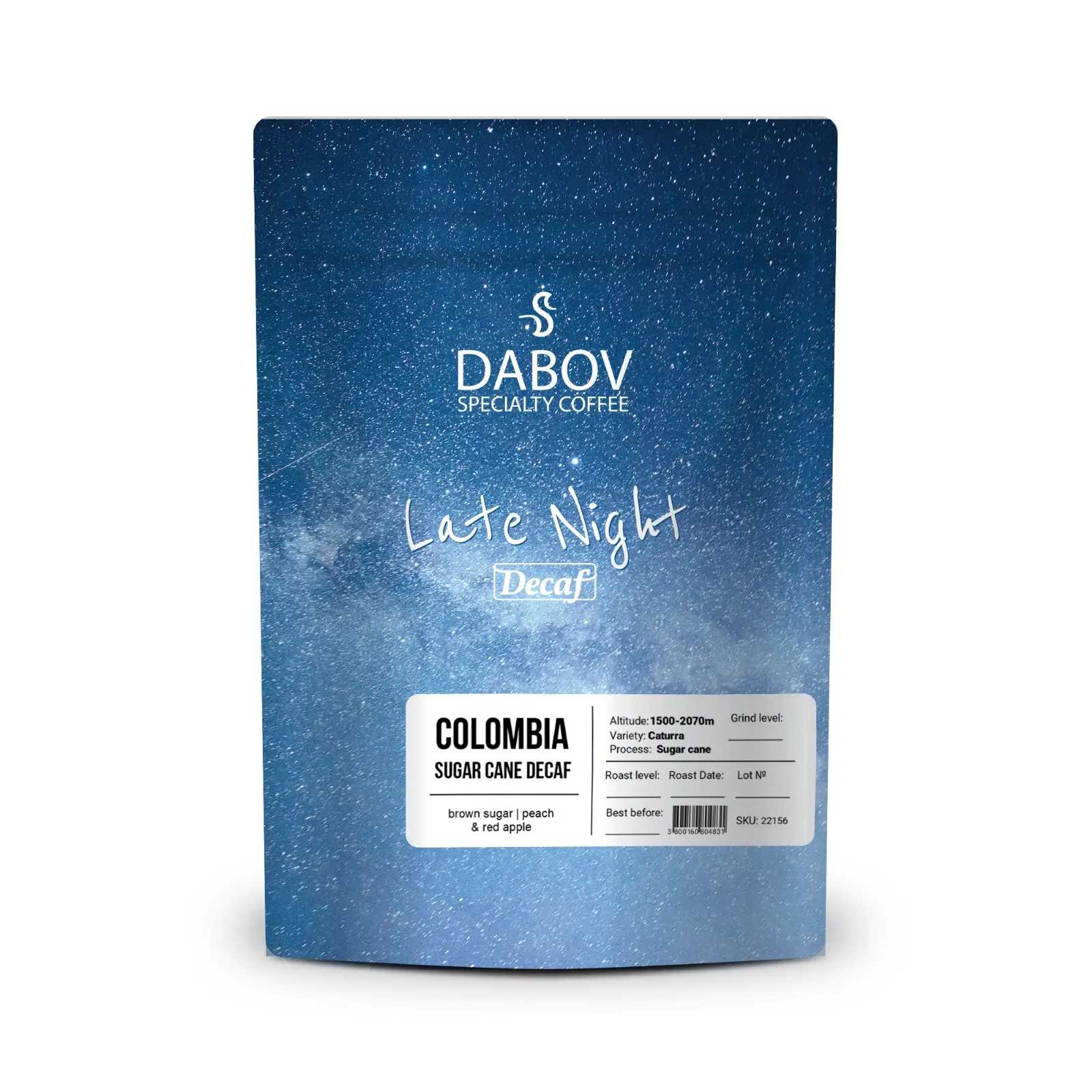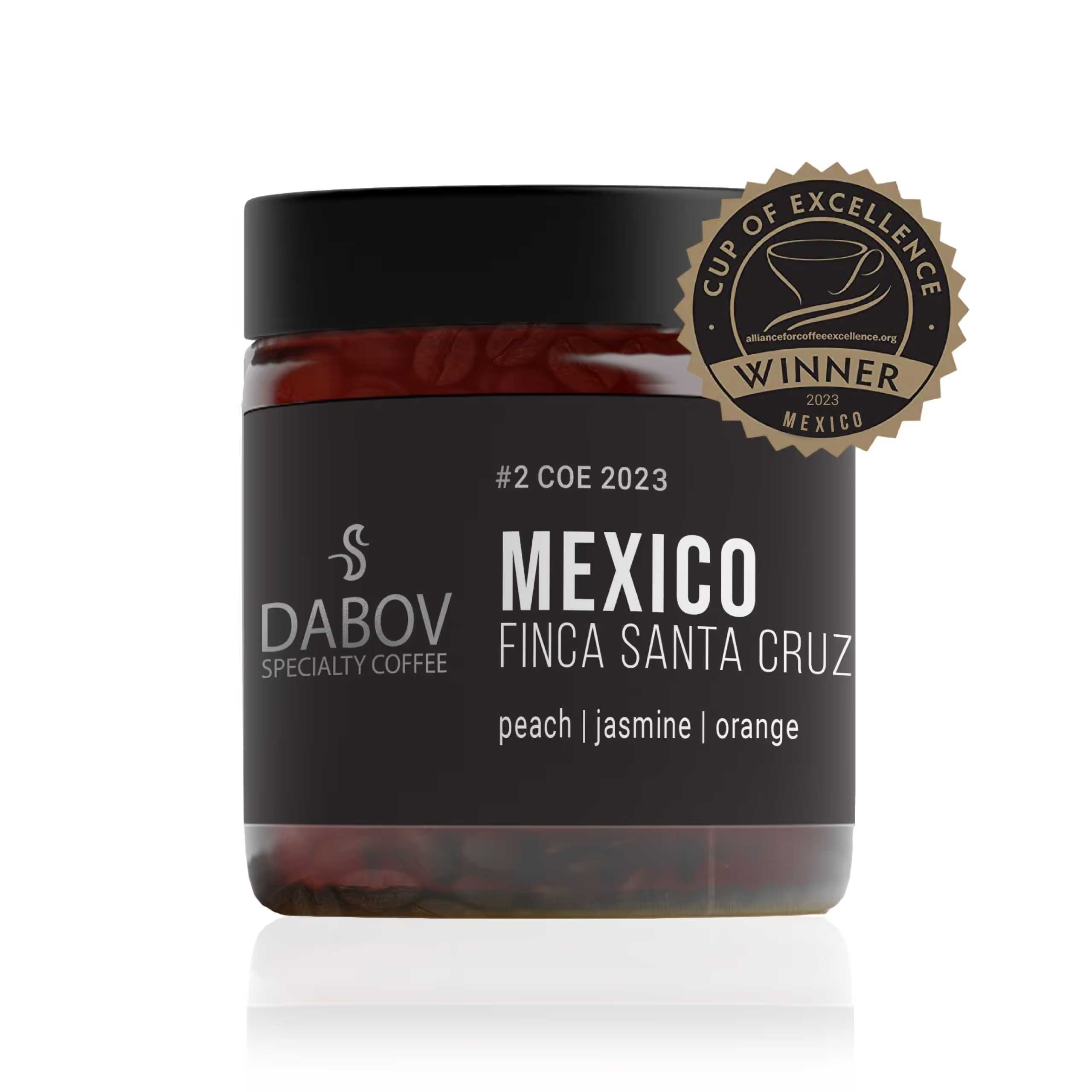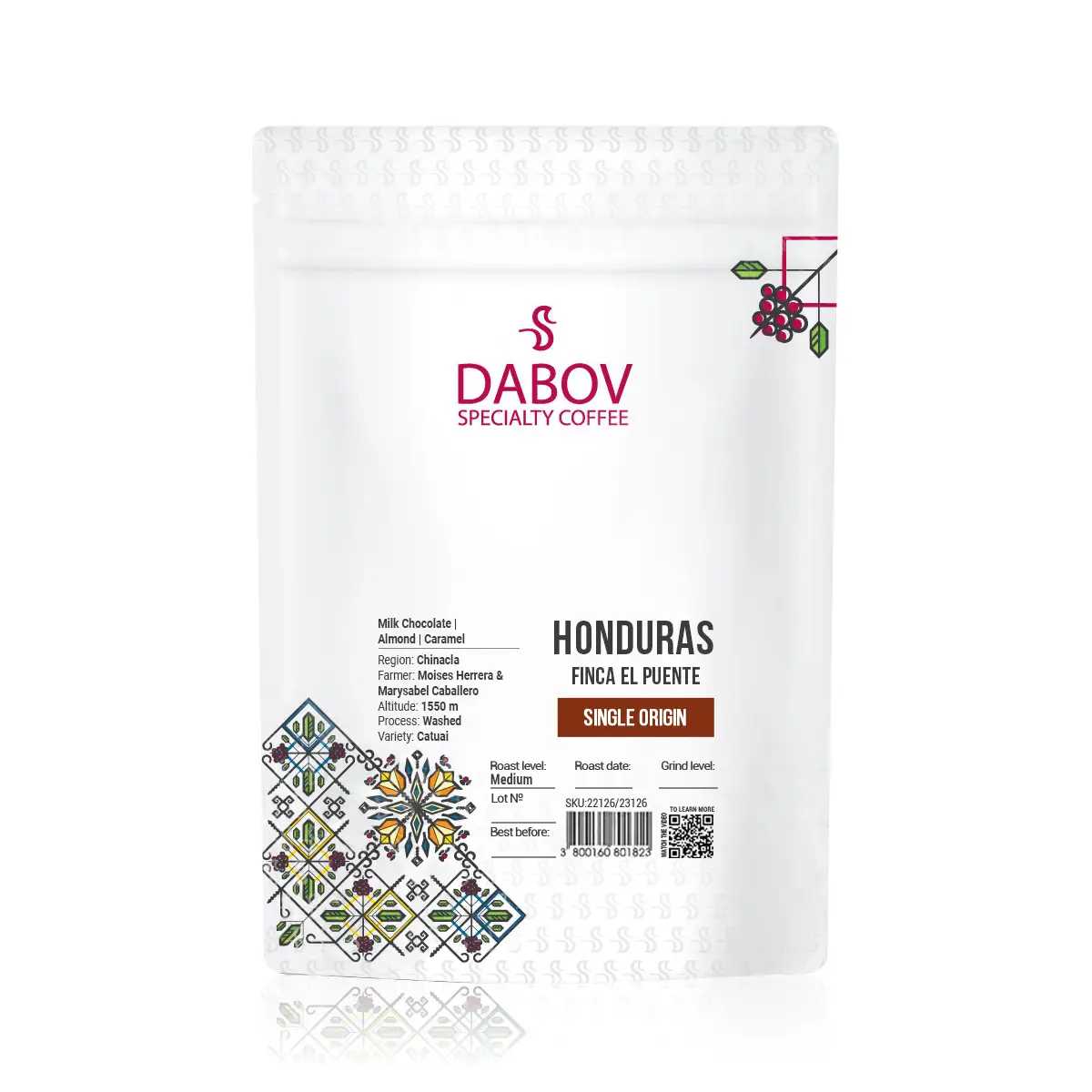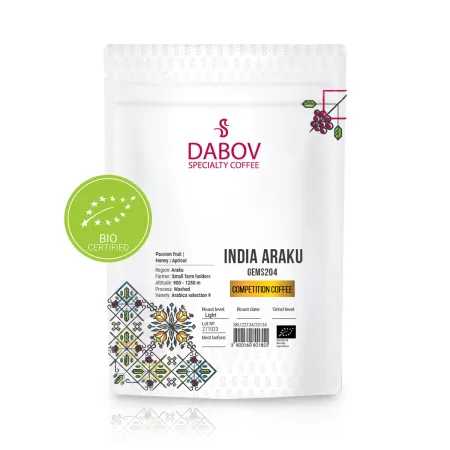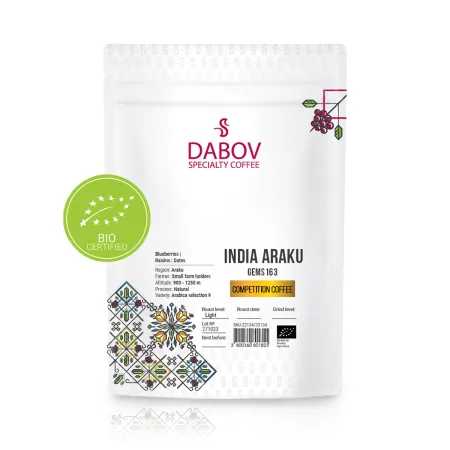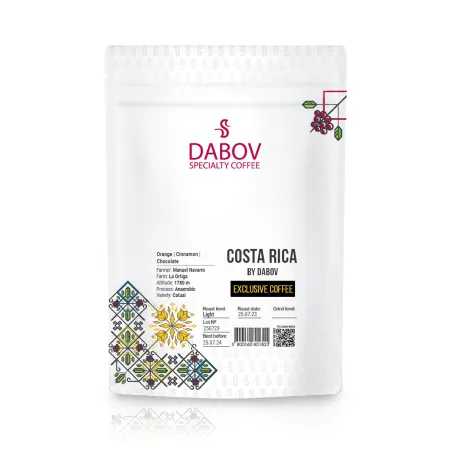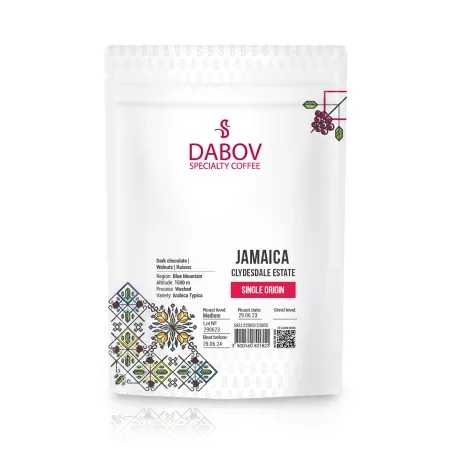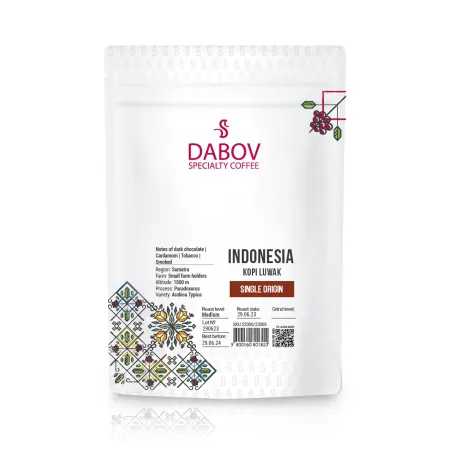Aftertaste in Coffee What It Is and Why It Matters
Coffee lovers often overlook the aftertaste, yet it plays a crucial role in the overall flavor experience. Aftertaste is the lingering flavor that remains after swallowing coffee, and understanding it can elevate your coffee tasting skill. This article delves into the science behind aftertaste, exploring how it influences our perception of flavor profiles. Learn about the different types of aftertaste across various coffee beans and the significance of aftertaste in professional coffee evaluations. Discover techniques for recognizing and enhancing your sensory experience, from brewing methods to food pairings. With insights into coffee varietals and brewing impacts, this guide will transform your appreciation of coffee. Join us on this journey to explore the essence of aftertaste in coffee and elevate your tasting game.
Coffee, a beverage cherished by millions worldwide, is a complex symphony of flavors that dance on our taste buds. Among the many elements that contribute to this sensory experience, one stands out as particularly intriguing and often overlooked: the aftertaste. This lingering sensation, which persists long after the last sip, plays a crucial role in defining the overall quality and enjoyment of your cup of joe. In this comprehensive exploration, we'll delve deep into the world of coffee aftertaste, unraveling its mysteries and revealing why it matters so much to coffee enthusiasts and professionals alike.
Understanding Coffee Aftertaste
What is Aftertaste?
Aftertaste, in the context of coffee, refers to the persistent flavor sensations that remain in your mouth after you've swallowed the liquid. It's the ghost of the coffee's presence, a flavor echo that can last anywhere from a few seconds to several minutes. This lingering taste is not merely a remnant of the initial flavor but a distinct experience in itself, often revealing nuances and complexities that weren't immediately apparent during the first sip.
The duration and intensity of the aftertaste can vary significantly depending on the coffee's origin, roast profile, and brewing method. Some coffees leave a clean, crisp finish that dissipates quickly, while others impart a long-lasting, evolving flavor journey that continues to unfold long after the cup is empty. This persistence is one of the key factors that coffee experts consider when evaluating the quality of a brew.
Interestingly, the aftertaste can sometimes differ markedly from the initial flavor profile. For instance, a coffee might start with bright, citrusy notes but leave a rich, chocolatey aftertaste. This contrast adds depth and intrigue to the overall tasting experience, making each sip a new discovery.
The Science Behind Aftertaste
To truly appreciate the phenomenon of aftertaste, we need to delve into the fascinating world of sensory science. The perception of taste is a complex interplay between our taste buds, olfactory receptors, and brain. When we drink coffee, the flavor compounds interact with taste receptors on our tongue, sending signals to our brain that we interpret as taste. However, the story doesn't end there.
A crucial component in the perception of aftertaste is retronasal olfaction. This process occurs when volatile compounds from the coffee travel up the back of the throat and into the nasal cavity, where they interact with olfactory receptors. This retronasal pathway is responsible for much of what we perceive as flavor, including the lingering sensations of aftertaste.
The complexity of coffee's chemical composition contributes significantly to its aftertaste. Coffee contains over 1,000 different chemical compounds, many of which are aromatic and contribute to its flavor profile. Some of these compounds are more volatile than others, meaning they evaporate and reach our olfactory receptors at different rates. This variation in volatility is partly responsible for the evolving nature of coffee's aftertaste.
Moreover, the interaction between these compounds and our saliva can create new flavor perceptions. Enzymes in our saliva can break down certain compounds, releasing new flavors that weren't present in the initial taste. This chemical transformation contributes to the dynamic nature of coffee's aftertaste, making it a constantly evolving experience.
Types of Aftertaste
Coffee aftertastes can be broadly categorized into several types, each contributing uniquely to the overall tasting experience:
- Pleasant Aftertastes: These are the desirable lingering flavors that enhance the coffee drinking experience. They can range from sweet and fruity to rich and chocolatey. For example, a high-quality Ethiopian Yirgacheffe might leave a pleasant, lingering taste of blueberries and jasmine tea.
- Unpleasant Aftertastes: Sometimes, coffee can leave less desirable aftertastes, such as bitterness, astringency, or a burnt flavor. These are often indicative of problems in the coffee's production, roasting, or brewing process. For instance, over-extracted coffee might leave a harsh, bitter aftertaste that overwhelms other flavors.
- Long-lasting Aftertastes: Some coffees, particularly those with complex flavor profiles, can leave aftertastes that persist for several minutes. A Sumatran coffee, known for its earthy, full-bodied flavor, might leave a long-lasting aftertaste of dark chocolate and cedar.
- Short-lived Aftertastes: Other coffees, especially lighter roasts or those with high acidity, might have a clean, crisp finish with a short-lived aftertaste. A bright, citrusy Kenyan coffee might leave a brief, refreshing aftertaste reminiscent of grapefruit.
- Evolving Aftertastes: Perhaps the most intriguing type, these aftertastes change over time, revealing different flavor notes as they linger. A complex Costa Rican coffee might start with a nutty aftertaste that evolves into notes of caramel and finally settles into a subtle floral finish.
Understanding these different types of aftertastes can greatly enhance your coffee appreciation, allowing you to discern the subtle nuances that make each cup unique.
Coffee Flavor Profile
Components of Coffee Flavor
To fully grasp the significance of aftertaste, we must first understand the components that make up coffee's overall flavor profile. Coffee flavor is a complex interplay of several key elements:
- Acidity: Often misunderstood, acidity in coffee refers to a bright, tangy quality that adds liveliness to the cup. It's experienced as a sharp, clean sensation on the sides of the tongue. High-quality Arabica coffees, especially those from high-altitude regions, are known for their pleasant acidity. This component can contribute significantly to the aftertaste, often leaving a crisp, refreshing sensation.
- Bitterness: A certain degree of bitterness is expected and even desirable in coffee. It provides balance and depth to the flavor profile. However, excessive bitterness, especially in the aftertaste, can be a sign of over-extraction or dark roasting. The key is to achieve a harmonious balance where bitterness complements other flavor components without overpowering them.
- Sweetness: Natural sweetness in coffee comes from the sugars present in the bean, which are caramelized during the roasting process. This sweetness can manifest in various forms, from fruity to caramel-like, and often plays a crucial role in the pleasant lingering taste of a good coffee.
- Body: This refers to the weight and texture of the coffee in your mouth. It can range from light and tea-like to rich and syrupy. The body of a coffee significantly influences how flavors are perceived and how long they linger, thus affecting the aftertaste.
- Aroma: While not strictly a taste, aroma is inseparable from flavor perception. The volatile compounds responsible for coffee's aroma contribute significantly to its flavor profile and aftertaste through retronasal olfaction.
These components don't exist in isolation but interact in complex ways to create the overall flavor experience. The balance and interplay of these elements determine not only the initial taste but also the character and quality of the aftertaste.
The Role of Aftertaste in Coffee Flavor Profiles
Aftertaste serves as a crucial component in defining a coffee's overall flavor profile. It's the final act in the flavor performance, leaving a lasting impression that can make or break the entire experience. Here's why aftertaste is so important:
- Complexity Indicator: A complex, evolving aftertaste is often a sign of a high-quality, well-balanced coffee. It indicates that the coffee has multiple layers of flavor that unfold over time, providing a more engaging and satisfying experience.
- Balance Revealer: The aftertaste can reveal much about a coffee's balance. If certain flavors dominate the aftertaste disproportionately, it might indicate an imbalance in the overall flavor profile.
- Uniqueness Marker: The aftertaste often carries the most distinctive characteristics of a coffee's origin and processing method. It's where the terroir and the artistry of coffee production often shine through most clearly.
- Quality Measure: In professional coffee tasting, the quality and character of the aftertaste are key criteria in evaluating overall coffee quality. A clean, pleasant, long-lasting aftertaste is generally considered a hallmark of superior coffee.
- Enjoyment Enhancer: For many coffee drinkers, a pleasing aftertaste prolongs the enjoyment of the coffee beyond the last sip, making the experience more memorable and satisfying.
Understanding the role of aftertaste can significantly enhance your coffee appreciation, allowing you to discern subtle differences between different coffees and brewing methods.
Coffee Varietals and Aftertaste
Different coffee varietals and growing conditions can significantly influence the character of the aftertaste. Let's explore some examples:
- Arabica vs. Robusta: Arabica coffees generally have a more complex and nuanced aftertaste, often featuring fruity, floral, or chocolatey notes. Robusta, on the other hand, tends to have a stronger, more bitter aftertaste with earthy or woody characteristics.
- Ethiopian Coffees: Known for their fruity and floral profiles, Ethiopian coffees often leave a lingering taste of berries, jasmine, or bergamot. The famous Yirgacheffe, for instance, might leave an aftertaste reminiscent of blueberries and Earl Grey tea.
- Colombian Coffees: These often have a well-balanced aftertaste with notes of caramel, nuts, and a subtle fruitiness. The aftertaste tends to be clean and smooth, reflecting the coffee's overall balance.
- Sumatran Coffees: Known for their full body and earthy flavors, Sumatran coffees often leave a long-lasting aftertaste with notes of dark chocolate, cedar, and sometimes a subtle spiciness.
- Kenyan Coffees: These are celebrated for their bright acidity and complex flavor profiles. The aftertaste often features a lingering citrusy brightness, sometimes accompanied by a subtle blackcurrant note.
The growing conditions, including altitude, soil composition, and climate, also play a crucial role in shaping a coffee's aftertaste. High-altitude grown coffees, for instance, often have a more pronounced acidity that contributes to a crisp, clean aftertaste.
The Importance of Aftertaste in Coffee Taste Analysis
Evaluating Coffee Quality
In the world of professional coffee tasting, aftertaste is a critical component in evaluating overall coffee quality. During cupping sessions and tasting competitions, experts pay close attention to the character, duration, and evolution of the aftertaste. Here's why it's so important:
- Complexity Indicator: A complex, evolving aftertaste is often a sign of a high-quality coffee. It indicates that the coffee has multiple layers of flavor that unfold over time, providing a more engaging tasting experience.
- Balance Measure: The aftertaste can reveal much about a coffee's overall balance. If certain flavors dominate the aftertaste disproportionately, it might indicate an imbalance in the flavor profile.
- Cleanliness Check: A clean aftertaste, free from off-flavors or excessive bitterness, is a key indicator of quality in coffee production and processing.
- Distinctiveness Marker: The aftertaste often carries the most distinctive characteristics of a coffee's origin and processing method. It's where the terroir and the artistry of coffee production often shine through most clearly.
- Enjoyment Factor: While not strictly a quality measure, a pleasing aftertaste that lingers can significantly enhance the overall enjoyment of the coffee, making it more memorable and satisfying.
In professional cupping sessions, tasters will often wait several minutes between tastes to fully experience and evaluate the aftertaste. They'll note its duration, intensity, and how it evolves over time. This careful analysis contributes significantly to the overall score and evaluation of the coffee.
Sensory Analysis Techniques
Coffee professionals use various techniques to assess aftertaste during sensory analysis. Here are some of the key methods:
- Cupping Protocols: The Specialty Coffee Association (SCA) has established standardized cupping protocols that include specific steps for evaluating aftertaste. Tasters slurp the coffee to aerate it and spread it across their palate, then wait to assess the lingering flavors.
- Flavor Wheel Assessments: The Coffee Taster's Flavor Wheel, developed by the SCA and World Coffee Research, provides a comprehensive vocabulary for describing coffee flavors, including those in the aftertaste. Tasters use this tool to articulate the specific notes they perceive in the aftertaste.
- Time-Intensity Profiling: This technique involves tracking how the intensity of different flavor attributes changes over time after swallowing. It's particularly useful for understanding the evolution of complex aftertastes.
- Retronasal Olfaction Focus: Tasters pay special attention to the flavors perceived through retronasal olfaction, which plays a crucial role in aftertaste perception. They might use techniques like the "slurp and breathe" method to enhance this perception.
- Palate Cleansing: Between tastings, professionals use palate cleansers like plain water or neutral crackers to reset their taste buds. This ensures that the aftertaste of one coffee doesn't interfere with the evaluation of the next.
- Comparative Analysis: Tasters often evaluate multiple coffees side by side, allowing them to compare aftertastes directly and discern subtle differences.
These techniques, honed through years of practice and standardization, allow coffee professionals to conduct thorough, objective analyses of coffee aftertaste, contributing to the overall quality assessment of the beans.
Case Studies of Coffee Tasting
To illustrate the importance of aftertaste in coffee evaluation, let's explore a few case studies from real-world coffee tastings:
- Ethiopian Yirgacheffe: In a recent cupping session, a high-quality Yirgacheffe displayed a complex aftertaste that evolved from an initial burst of lemon and bergamot to a lingering floral sweetness reminiscent of jasmine. This evolving aftertaste contributed significantly to its high overall score, showcasing the coffee's complexity and quality.
- Colombian Supremo: A well-regarded Colombian Supremo was noted for its exceptionally clean and balanced aftertaste. Tasters described a lingering sweetness with notes of caramel and roasted nuts, perfectly complementing the coffee's initial flavor profile. The harmony between the initial taste and aftertaste was a key factor in its positive evaluation.
- Sumatran Mandheling: This coffee surprised tasters with its long-lasting, complex aftertaste. Initial earthy and herbal notes gave way to a lingering dark chocolate bitterness, followed by a subtle spiciness. The evolving nature of the aftertaste was seen as a sign of the coffee's depth and quality.
- Kenya AA: In a comparative tasting of African coffees, a Kenya AA stood out for its bright, citrusy aftertaste. Tasters noted how the initial burst of grapefruit acidity mellowed into a pleasant, lingering sweetness reminiscent of black currants. This distinctive aftertaste helped differentiate it from other high-quality African coffees in the session.
- Costa Rican Tarrazu: This coffee impressed tasters with its clean, crisp aftertaste. The initial bright acidity gave way to a subtle sweetness with hints of milk chocolate. The balance and clarity of the aftertaste contributed significantly to its high overall rating.
These case studies demonstrate how aftertaste can vary widely between different coffees and how it plays a crucial role in the overall evaluation of coffee quality. They also highlight the importance of paying attention to how the aftertaste evolves over time, as this can reveal additional layers of complexity in high-quality coffees.
Enhancing Your Coffee Sensory Experience
Brewing Methods and Their Impact on Aftertaste
The way you brew your coffee can significantly influence its aftertaste. Different brewing methods extract coffee compounds at varying rates and proportions, leading to distinct flavor profiles and aftertastes. Let's explore how some popular brewing methods affect aftertaste:
- Espresso: This high-pressure brewing method produces a concentrated shot with a rich, intense flavor. The aftertaste of a well-pulled espresso is often described as lingering and complex, with notes of chocolate, caramel, or nuts persisting long after the shot is consumed. The high concentration of oils in espresso contributes to its long-lasting aftertaste.
- Pour-Over: This method, which involves slowly pouring hot water over ground coffee, often results in a clean, bright cup with a distinct aftertaste. The slower extraction process allows for more nuanced flavors to develop. Pour-over coffees often have a crisp, clean aftertaste that can highlight the coffee's acidity and subtle flavor notes.
- French Press: The immersion brewing method of a French press tends to produce a full-bodied coffee with a rich, sometimes slightly gritty mouthfeel. The aftertaste is often robust and long-lasting, with earthy or chocolatey notes predominating. The presence of fine particles in French press coffee can contribute to a more pronounced aftertaste.
- Cold Brew: This method, which involves steeping coffee grounds in cold water for an extended period, produces a smooth, less acidic coffee. The aftertaste of cold brew is often described as clean and subtle, with a lingering sweetness. The lower acidity can make the aftertaste less pronounced but potentially more pleasant for some palates.
- AeroPress: This versatile brewing method can produce a range of flavor profiles depending on the technique used. Generally, AeroPress coffee has a clean, smooth taste with a well-balanced aftertaste that can highlight both the coffee's acidity and its deeper flavor notes.
To achieve the best results with any brewing method:
- Use freshly roasted, high-quality beans
- Grind your coffee just before brewing
- Pay attention to water quality and temperature
- Experiment with different ratios of coffee to water
- Be consistent in your technique to achieve reproducible results
Remember, the goal is to find the brewing method that best highlights the qualities you enjoy in your coffee, including its aftertaste.
Pairings That Enhance Aftertaste
Pairing coffee with complementary flavors can enhance its aftertaste and overall sensory experience. Here are some suggestions for pairings that can bring out the best in your coffee:
- Dark Chocolate: The bitterness and complexity of dark chocolate can complement and enhance the aftertaste of medium to dark roast coffees. Try pairing a piece of 70% dark chocolate with a full-bodied Sumatran coffee to experience how the chocolate enhances the coffee's earthy, spicy notes.
- Citrus Fruits: Light, bright coffees with high acidity pair well with citrus fruits. Try a slice of orange or grapefruit with an Ethiopian coffee to enhance its fruity, floral aftertaste.
- Nuts: The nutty flavors in many coffees can be amplified by pairing them with actual nuts. Almonds or hazelnuts can complement the nutty aftertaste of a Colombian or Brazilian coffee.
- Cheese: Certain cheeses can provide an interesting contrast to coffee flavors. A creamy brie can balance the acidity of a bright coffee, while a sharp cheddar might complement a full-bodied dark roast.
- Spices: Cinnamon, cardamom, or even a pinch of salt can enhance different aspects of coffee's flavor profile and aftertaste. Try a sprinkle of cinnamon with a medium roast to bring out its sweet, caramel notes.
- Berries: Fresh berries can complement the fruity notes in many light roast coffees. Try blueberries with a Kenyan coffee to enhance its bright, complex aftertaste.
- Maple Syrup: A small amount of real maple syrup can enhance the sweetness in the aftertaste of medium roasts, particularly those with nutty or caramel notes.
Remember, the key to successful pairing is balance. The goal is to enhance, not overpower, the coffee's natural flavors and aftertaste. Experiment with different combinations to find what works best for your palate and preferred coffee types.
Recognizing and Developing Your Palate
Developing a refined palate for coffee tasting is a journey that requires patience, practice, and mindfulness. Here are some tips to help you enhance your sensitivity to coffee aftertaste:
- Practice Mindful Tasting: When drinking coffee, take the time to focus on the flavors. Pay attention to how the taste evolves from the first sip to the aftertaste. Try to identify specific flavor notes and how they change over time.
- Use Tasting Notes: Keep a journal of your coffee experiences. Note the coffee's origin, roast level, brewing method, and your perceptions of its flavor and aftertaste. Over time, you'll develop a personal flavor vocabulary.
- Try Comparative Tastings: Brew two or three different coffees and taste them side by side. This can help you discern subtle differences in flavor and aftertaste between different origins or roast levels.
- Explore the Coffee Taster's Flavor Wheel: Familiarize yourself with the SCA Coffee Taster's Flavor Wheel. This tool can help you put words to the flavors you're experiencing and guide you in identifying subtle taste notes.
- Attend Cupping Sessions: Many coffee shops and roasters offer public cupping sessions. These guided tastings can be invaluable in developing your palate and learning professional tasting techniques.
- Experiment with Brewing Methods: Try brewing the same coffee using different methods. This can help you understand how brewing affects flavor and aftertaste.
- Cleanse Your Palate: Use water or plain crackers to cleanse your palate between tastings. This helps reset your taste buds and allows you to experience each coffee's aftertaste clearly.
- Practice Retronasal Breathing: After swallowing coffee, try exhaling through your nose. This technique, known as retronasal breathing, can help you perceive more subtle flavor notes in the aftertaste.
- Taste Beyond Coffee: Developing your palate isn't limited to coffee. Tasting and identifying flavors in foods, wines, and other beverages can help sharpen your overall sensory skills.
- Be Patient and Persistent: Developing a refined palate takes time. Don't be discouraged if you can't immediately identify complex flavor notes. Keep practicing, and your ability to discern subtle flavors will improve over time.
Remember, there's no "right" or "wrong" in taste perception. Your experience of coffee's flavor and aftertaste is personal. The goal is to enhance your ability to perceive and appreciate the nuances in your cup, enriching your overall coffee experience.
Conclusion
Recap of Key Points
As we've explored in this comprehensive journey through the world of coffee aftertaste, this often-overlooked aspect of coffee tasting is crucial to the overall sensory experience. Let's recap the key points we've covered:
- Aftertaste is the lingering flavor sensation that remains after swallowing coffee, often revealing nuances not immediately apparent in the initial taste.
- The science behind aftertaste involves complex interactions between taste receptors, olfactory processes, and chemical compounds in coffee.
- Different types of aftertaste exist, from pleasant and long-lasting to short-lived or evolving, each contributing uniquely to the coffee experience.
- The coffee flavor profile is composed of various elements including acidity, bitterness, sweetness, body, and aroma, all of which influence the aftertaste.
- Aftertaste plays a crucial role in evaluating coffee quality, serving as an indicator of complexity, balance, and overall excellence.
- Different coffee varietals and growing conditions significantly influence the character of the aftertaste, contributing to each coffee's unique flavor signature.
- Professional tasters use specific techniques and tools, such as cupping protocols and flavor wheels, to analyze and describe coffee aftertaste.
- Brewing methods can significantly impact aftertaste, with each method extracting coffee compounds differently.
- Pairing coffee with complementary foods can enhance its aftertaste and overall sensory experience.
- Developing a refined palate for coffee tasting is a skill that can be cultivated through practice, mindfulness, and exploration.
Understanding and appreciating coffee aftertaste adds a new dimension to your coffee enjoyment, allowing you to experience the full complexity and artistry in every cup.
Encouragement for Further Exploration
The world of coffee is vast and endlessly fascinating, with aftertaste being just one of its many intriguing aspects. As you continue your coffee journey, I encourage you to:
- Experiment with different coffee origins, roast levels, and brewing methods to experience a wide range of aftertastes.
- Attend local coffee tastings or cupping sessions to learn from experts and fellow enthusiasts.
- Keep a coffee journal to track your experiences and observations, helping you refine your palate over time.
- Don't be afraid to try new and unfamiliar coffees – you might discover a new favorite aftertaste!
- Share your experiences with others. Discussing coffee flavors and aftertastes can enhance your understanding and appreciation.
Remember, developing your palate and appreciating coffee aftertaste is a personal journey. There's always more to learn and experience in the world of coffee. Embrace the process, enjoy the discoveries, and savor every lingering flavor note in your cup.
Call to Action
We'd love to hear about your experiences with coffee aftertaste! Have you discovered a coffee with a particularly memorable aftertaste? Or perhaps you've found a brewing method that brings out the best in your favorite beans? Share your stories and recommendations in the comments below.
For those eager to dive deeper into the world of coffee, consider signing up for our newsletter. We regularly feature articles on coffee tasting, brewing techniques, and the latest trends in the coffee industry. You'll also get exclusive access to coffee tasting events and workshops in your area.
Follow us on social media @CoffeeAficionado for daily coffee tips, beautiful brew shots, and engaging discussions with fellow coffee lovers. Don't forget to use the hashtag #AftertasteAdventures when sharing your coffee experiences!
Lastly, if you're looking for coffees known for their excellent aftertastes, check out our curated selection in the online store. From bright, citrusy Ethiopians to rich, chocolatey Brazilians, we've got something to suit every palate.
Remember, every cup of coffee is an opportunity for a new taste adventure. Happy brewing, and may your aftertastes always be delightful!



